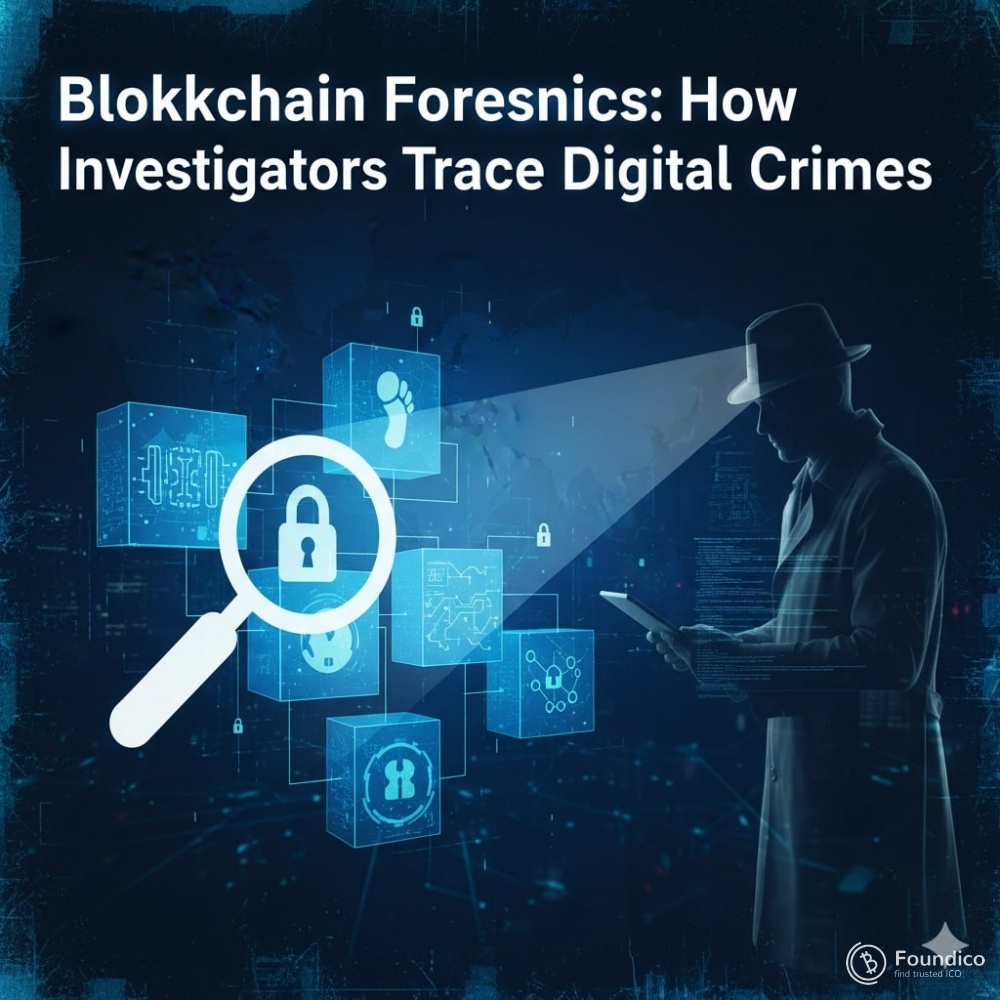Blockchain Forensics: How Investigators Trace Digital Crimes

By Dr. Pooyan Ghamari, Swiss Economist and Visionary
The Myth of Blockchain Anonymity
Blockchain technology is often celebrated for its transparency, yet criminals exploit a persistent misconception: that it guarantees anonymity. In reality, most public blockchains are pseudonymous—transactions are visible to all, linked only by cryptographic addresses. As a Swiss economist who has long studied the dual-edged impact of decentralized finance on global markets, I assert that this very transparency is the Achilles’ heel of digital crime. Blockchain forensics has emerged as a precision discipline, transforming immutable ledgers into prosecutable evidence trails that law enforcement, regulators, and private investigators now follow with surgical accuracy.
The Anatomy of a Blockchain Trail
Every transaction on a public blockchain—Bitcoin, Ethereum, or beyond—is permanently recorded with timestamps, input/output addresses, amounts, and metadata. Forensic investigators begin with clustering: grouping addresses controlled by the same entity using heuristics such as common spending patterns or change address reuse. Advanced tools map transaction graphs, revealing flows across wallets, exchanges, and smart contracts. Even privacy-focused coins like Monero face pressure—chain analysis firms have developed probabilistic models to de-anonymize ring signatures and stealth addresses through timing correlations and volume analysis.
From Wallet to Real-World Identity
The breakthrough in blockchain forensics occurs at off-ramps—centralized exchanges where cryptocurrency converts to fiat. Know Your Customer (KYC) mandates require users to submit identity documents, creating anchor points. When illicit funds flow through a compliant exchange, investigators subpoena withdrawal records, linking wallet addresses to names, bank accounts, and IP logs. Dusting attacks—sending tiny transactions to millions of addresses—further aid clustering by observing subsequent consolidation patterns. Machine learning accelerates this: algorithms trained on labeled criminal wallets predict illicit activity with over 90% accuracy in real-time.
Case Studies in Digital Pursuit
High-profile recoveries illustrate the power of these methods. The 2022 Axie Infinity Ronin Bridge hack saw $625 million in Ethereum stolen—yet forensic teams traced funds through Tornado Cash, a privacy mixer, by analyzing pre- and post-mix flows and exchange deposits. Over $200 million has since been frozen. Similarly, the Colonial Pipeline ransomware payment in Bitcoin was followed from the hacker’s wallet through multiple hops to a Russian exchange, leading to the seizure of 63.7 BTC by the FBI. These cases underscore a core economic principle I emphasize: illicit actors optimize for speed and profit, often sacrificing operational security.
Tools of the Forensic Trade
Specialized firms dominate the field with proprietary platforms. Chainalysis Reactor, Elliptic Lens, and TRM Labs visualize complex transaction webs, flag sanctioned addresses, and integrate darknet marketplace data. Open-source alternatives like BlockSci and GraphSense empower academic and state-level investigators. On-chain analytics now incorporate artificial intelligence: anomaly detection flags unusual accumulation patterns, while natural language processing scans forum posts and social media for wallet mentions tied to criminal operations.
Overcoming Privacy Defenses
Privacy coins and layer-2 solutions complicate tracing, but not insurmountably. Zcash’s shielded pools obscure amounts and parties—yet optional transparency features mean many users leave partial trails. Layer-2 rollups batch transactions, but settlement on base layers preserves auditability. Cross-chain bridges, while introducing fragmentation, create chokepoints where value aggregates and identity leaks occur. The future lies in quantum-resistant tracing and automated compliance layers embedded in protocol design.
Institutional Adoption and Regulatory Synergy
Forward-thinking jurisdictions integrate blockchain forensics into financial oversight. Switzerland’s FINMA collaborates with analytics providers to monitor licensed virtual asset service providers. The European Union’s MiCA regulation mandates transaction tracing capabilities for crypto custodians. Central bank digital currencies (CBDCs), which I have analyzed extensively, will inherently embed forensic hooks—full user identity tied to every token movement—setting a new standard for traceable money.
The Investigator’s Mindset in a Decentralized World
Success in blockchain forensics demands interdisciplinary expertise: cryptography, data science, behavioral economics, and legal procedure. Investigators must think like criminals—anticipating evasion tactics such as coinjoin mixing, decentralized exchange usage, or NFT laundering—while leveraging the ledger’s unforgiving permanence. Training programs must evolve, blending technical mastery with ethical frameworks to prevent abuse of surveillance capabilities.
Switzerland’s Leadership in Digital Accountability
With its tradition of financial integrity and technological innovation, Switzerland is ideally positioned to host a global center for blockchain forensic standards. A neutral, public-private consortium—perhaps under the Swiss Blockchain Federation—could certify tools, accredit investigators, and mediate international data-sharing agreements. Such leadership would reinforce Helvetic preeminence in the responsible governance of digital assets.
Turning Transparency into Justice
Blockchain was never designed for crime—it was built for trust through verification. Forensic science now completes that vision, transforming pseudonymous ledgers into instruments of accountability. As decentralized finance scales, so must our capacity to police it. The criminals of tomorrow will wield AI and quantum tools, but the immutable truth of the chain—properly interrogated—will remain their undoing. In the end, blockchain does not hide crime; it memorializes it.
Dr. Pooyan Ghamari is a Swiss economist and visionary specializing in emerging technologies and global economic trends.
